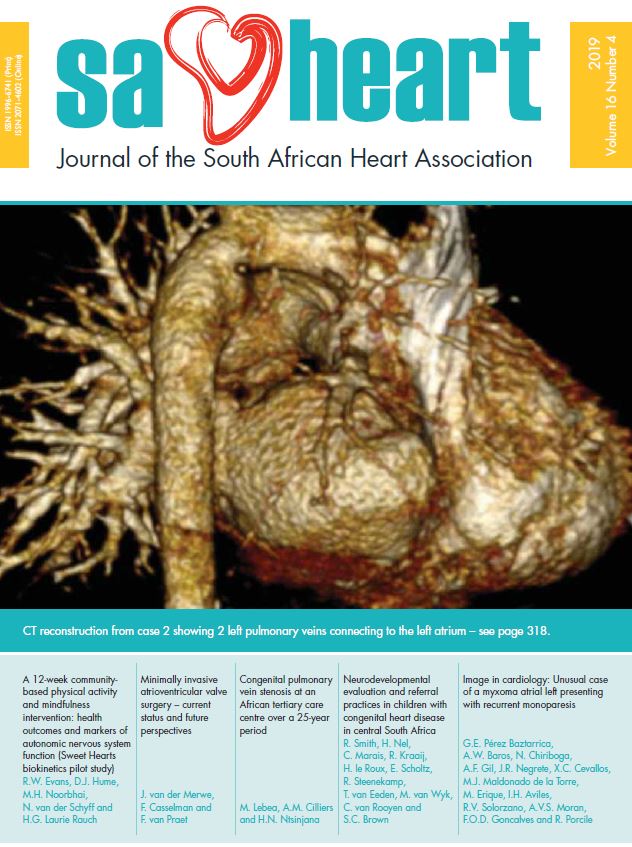Neurodevelopmental evaluation and referral practices in children with congenital heart disease in central South Africa
DOI:
https://doi.org/10.24170/16-4-3844Abstract
Introduction: Children with congenital heart disease (CHD) are at higher risk for developmental delays than the general population. The American Heart Association (AHA) published a guideline to address these concerns in 2012. This study determined the neurodevelopmental evaluation and referral practices of practitioners in central South Africa.
Method: An online survey was administered to practitioners (n=45) including paediatric cardiologists (n=4), cardiothoracic surgeons (n=4) and general paediatricians (n=37). Information on practitioner characteristics, awareness of the 2012 AHA guideline; and neurodevelopmental evaluation and referral practices was collected.
Results: Twenty-one practitioners responded, including paediatric cardiologists (n=4), cardiothoracic surgeons (n=2) and paediatricians (n=15). Data for 20 practitioners was included. Despite most practitioners (n=18) indicating guidelines for the management of development were important, the majority (n=16; 80%) were unaware of the guideline. Most practitioners (n=18; 90%) failed to risk stratify children to identify those to be evaluated. Children with developmental delays were referred for formal developmental evaluation (n=11; 55%) and to intervention therapies (n= 15; 75%).
Conclusion: Most practitioners are unaware of the 2012 AHA guideline. Awareness of the developmental risks associated with CHD and implementation of the guideline could promote early identification of developmental delays with referral to intervention therapies.Downloads
Downloads
Published
How to Cite
Issue
Section
License
This journal is an open access journal, and the authors and journal should be properly acknowledged, when works are cited.
Authors may use the publishers version for teaching purposes, in books, theses, dissertations, conferences and conference papers.
A copy of the authors’ publishers version may also be hosted on the following websites:
- Non-commercial personal homepage or blog.
- Institutional webpage.
- Authors Institutional Repository.
The following notice should accompany such a posting on the website: “This is an electronic version of an article published in SAHJ, Volume XXX, number XXX, pages XXX–XXX”, DOI. Authors should also supply a hyperlink to the original paper or indicate where the original paper (http://www.journals.ac.za/index.php/SAHJ) may be found.
Authors publishers version, affiliated with the Stellenbosch University will be automatically deposited in the University’s’ Institutional Repository SUNScholar.
Articles as a whole, may not be re-published with another journal.
Copyright Holder: SA Heart Journal
The following license applies:
Attribution CC BY-NC-ND 4.0

